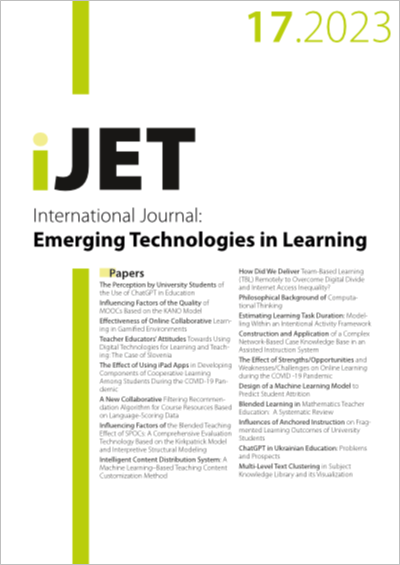Influencing Factors of the Blended Teaching Effect of SPOCs
A Comprehensive Evaluation Technology Based on the Kirkpatrick Model and Interpretive Structural Modeling
DOI:
https://doi.org/10.3991/ijet.v18i17.41359Keywords:
SPOC blended teaching, Teaching effect, Influencing factors, Kirkpatrick model, ISM, Comprehensive assessmentAbstract
Based on the comprehensive evaluation technology of the Kirkpatrick model and interpretive structural modeling (ISM), first, a survey was conducted in four colleges and universities in China, including the Yellow River Conservancy Technical Institute. Second, an influencing factor system for the small private online course (SPOC) blended teaching effect, in 17 aspects, was constructed from four levels: the reaction level, learning level, behavioral level, and results level. Third, the deep-seated factors influencing the SPOC blended teaching effect were analyzed via ISM. Research results showed that the influencing factor system for the SPOC blended teaching effect constructed in this research was scientific, reasonable, and highly operational, with a Cronbach’s alpha of 0.887. In addition, teachers’ sense of responsibility (A-4) and knowledge internalization (C-2) were the two most important factors influencing the SPOC blended teaching effect. The curriculum setting (A-1) and thinking ability (B-2) were two relatively direct factors. The research results have important reference value for enriching the current SPOC blended teaching method in institutions of higher learning and exploring its suitability for higher education teaching.
Downloads
Published
How to Cite
Issue
Section
License
Copyright (c) 2023 Man Zhang, Xiaohui Wei

This work is licensed under a Creative Commons Attribution 4.0 International License.



